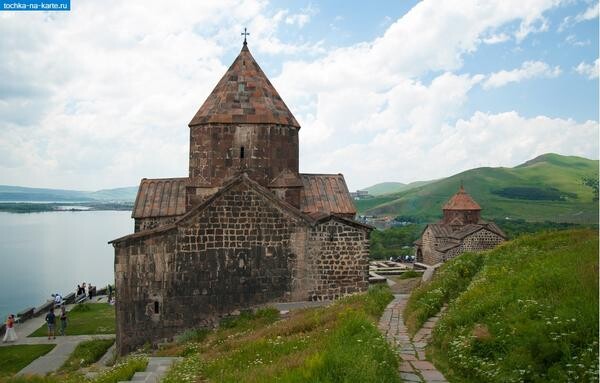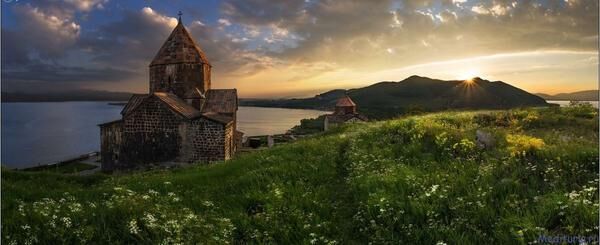Today the two churches, Sourb Arakelots (Holy Apostoles) and Sourb Astvatsatsin (Mother of God), remain both cross shaped with octagonal tambours and quite similar in appearance. Beside them lie the ruins of a gavit whose roof was originally supported by 6 wooden columns. Some of the remains of the gavit and its columns can be seen in the Yerevan Museum of History.
Initially the monastery was built at the southern shore of a small island. After artificial draining of the Lake Sevan, which started in the Stalin era, the water level fell about 20 metres, and the island transformed into a peninsula. At the southern shore of this newly created peninsula, a guesthouse of the Armenian Writers’ Union was built, the eastern shore is occupied by the Armenian president’s summer residence, while the monastery’s still active seminary moved to newly constructed buildings at the northern shore of the peninsula.
Due to easier accessibility (once it became a peninsula), good highway and railway connections with Yerevan, a well developed tourist industry in the town of Sevan town, and the picturesque location (although less picturesque than it was before the lake level drop), Sevanavank is one of the most visited sights in Armenia.










